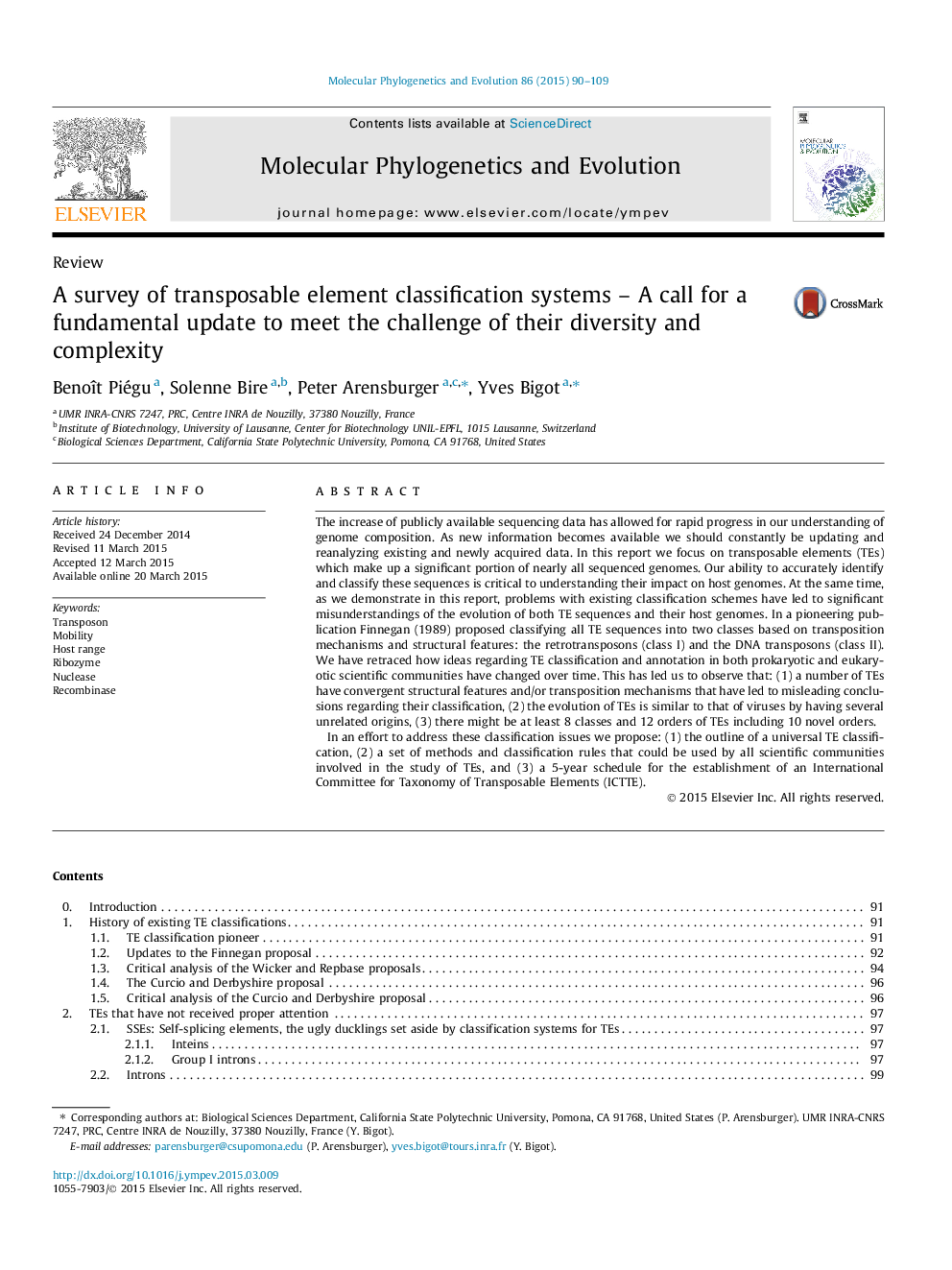| کد مقاله | کد نشریه | سال انتشار | مقاله انگلیسی | نسخه تمام متن |
|---|---|---|---|---|
| 2833836 | 1570810 | 2015 | 20 صفحه PDF | دانلود رایگان |
• The first criterion to define a TE is its ability to insert into a locus.
• Current classifications do not integrate the full diversity and the complexity of TEs.
• Certain TE families have convergent phenotypic traits, but different origins.
• Many TE families are prokaryotic and eukaryotic.
• There is a need to create an operational International Committee for Taxonomy of TEs.
The increase of publicly available sequencing data has allowed for rapid progress in our understanding of genome composition. As new information becomes available we should constantly be updating and reanalyzing existing and newly acquired data. In this report we focus on transposable elements (TEs) which make up a significant portion of nearly all sequenced genomes. Our ability to accurately identify and classify these sequences is critical to understanding their impact on host genomes. At the same time, as we demonstrate in this report, problems with existing classification schemes have led to significant misunderstandings of the evolution of both TE sequences and their host genomes. In a pioneering publication Finnegan (1989) proposed classifying all TE sequences into two classes based on transposition mechanisms and structural features: the retrotransposons (class I) and the DNA transposons (class II). We have retraced how ideas regarding TE classification and annotation in both prokaryotic and eukaryotic scientific communities have changed over time. This has led us to observe that: (1) a number of TEs have convergent structural features and/or transposition mechanisms that have led to misleading conclusions regarding their classification, (2) the evolution of TEs is similar to that of viruses by having several unrelated origins, (3) there might be at least 8 classes and 12 orders of TEs including 10 novel orders.In an effort to address these classification issues we propose: (1) the outline of a universal TE classification, (2) a set of methods and classification rules that could be used by all scientific communities involved in the study of TEs, and (3) a 5-year schedule for the establishment of an International Committee for Taxonomy of Transposable Elements (ICTTE).
Figure optionsDownload as PowerPoint slide
Journal: Molecular Phylogenetics and Evolution - Volume 86, May 2015, Pages 90–109
